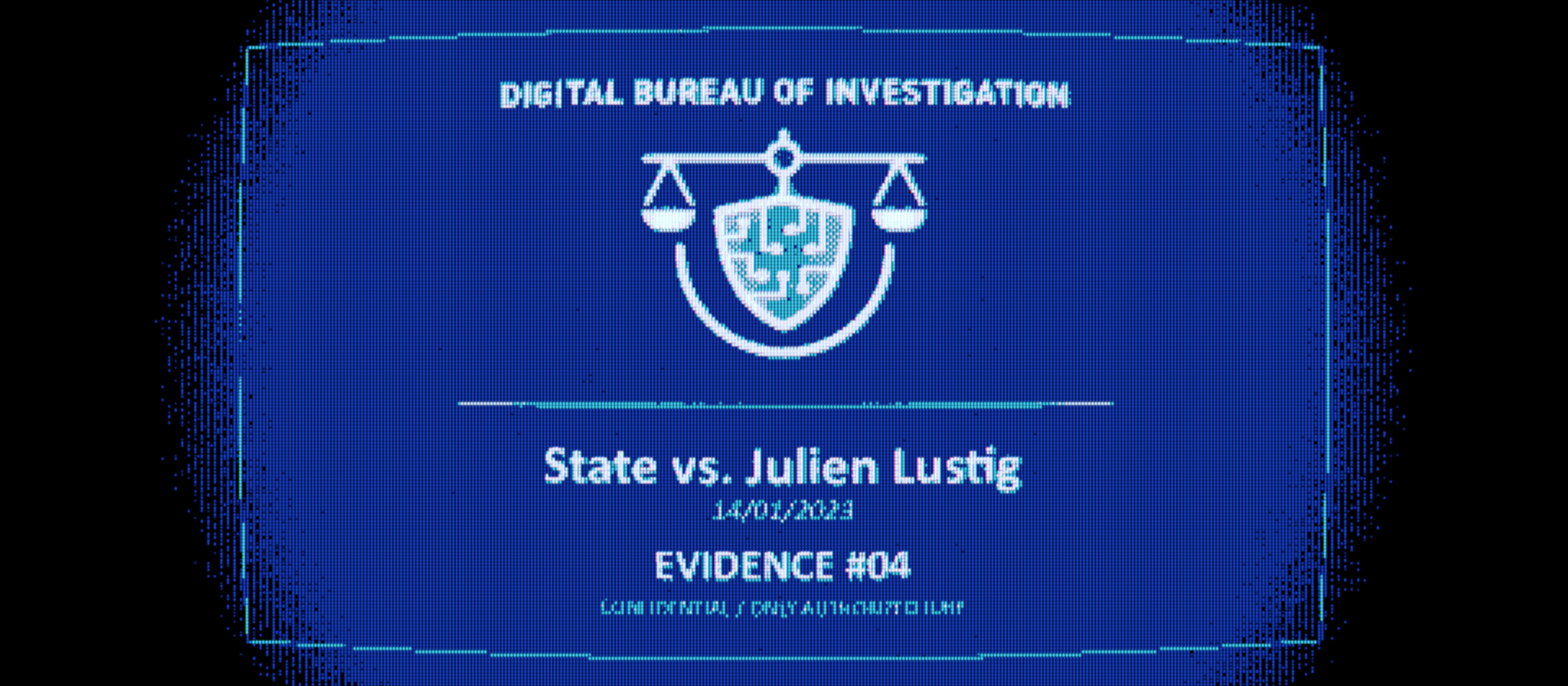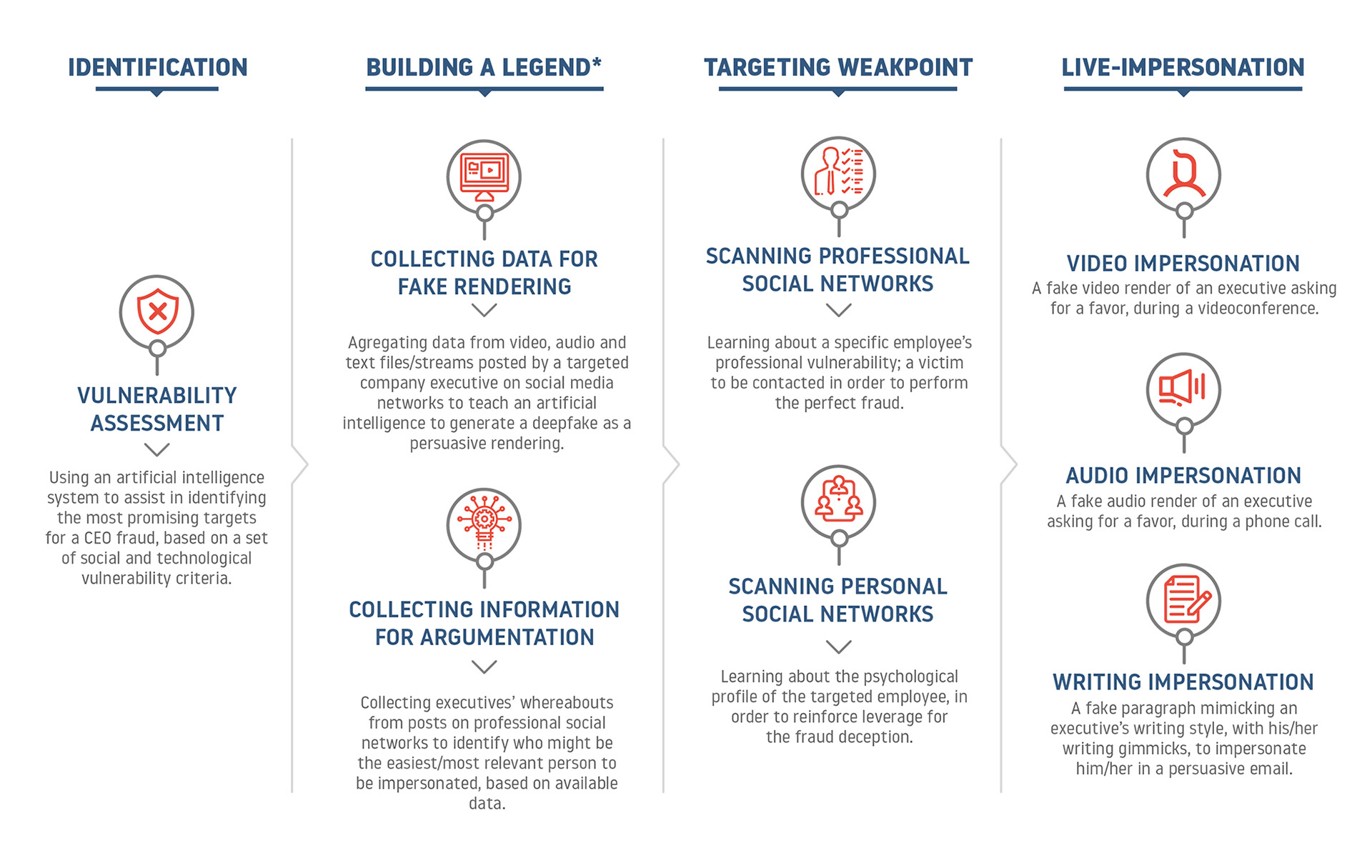
Augmented CEO Fraud
Anticiper les futurs crimes en col blanc par la fiction
L’édition 2019 du Future of Money Award (FoMA) invitait les designers à concevoir le crime financier du futur (spéculatif, bien sûr). Gage aux participants d’imaginer un crime financier exploitant de nouvelles failles juridiques, des changements dans les normes sociales ou des technologies émergentes.
Augmented CEO Fraud est une escroquerie sophistiquée reposant sur l’intelligence artificielle pour identifier des opportunités d’extorsion et usurper l’identité d’un cadre dirigeant, trompant ainsi des employés pour qu’ils effectuent des transferts de fonds ou de données non autorisés. En 2018, le FBI rapportait que l’Arnaque au Président (ou CEO Fraud) était devenue une arnaque de 12 milliards de dollars, s’appuyant sur la manipulation psychologique pour obtenir des informations sensibles ou des fonds.
Notre projet spécule sur une version augmentée de l’Arnaque au Président (CEO Fraud). Située en 2022, la fiction explore comment la mobilisation de l’intelligence artificielle (IA) et des technologies de deepfake pourrait servir à tromper les employés d’une entreprise ou d’une administration. Les deepfakes font appel à l’IA pour créer des images ou des voix réalistes, donnant l’impression qu’une personne a pu dire ou faire quelque chose qu’elle n’a pourtant jamais dit ou fait.
↑ Extraits du dossier judiciaire de Julien Lustig, arnaqueur augmenté par l’IA
Dans ce scénario, les cybercriminels utilisent ces outils pour perfectionner l’usurpation d’identité de cadres ou de décideurs, en formulant des demandes cruciales aux employés. Alors que la sensibilisation aux tentatives de phishing classiques augmente, cette nouvelle tactique technologique cible les maillons les plus faibles au sein des organisations.
Ce crime spéculatif automatise l’escroquerie avec des intelligences artificielles qui :
- Agrègent des informations, collectées notamment sur les réseaux sociaux, pour détecter des vulnérabilités et des opportunités d’usurpation, afin d’identifier quelle organisation et quel employé (le maillon faible) cibler en priorité.
- Créent des deepfakes pour usurper l’identité de PDG ou d’avocats et demander des transferts de fonds ou de données. Cette tactique peut également reposer sur l’usurpation d’une tierce partie influente, ciblant des victimes fortunées.
L’escroquerie Augmented CEO Fraud a de multiples impacts sur les organisations publiques ou privées qu’elle frappe :
- Des pertes financières importantes pouvant se chiffrer en centaines de milliers ou millions d’euros.
- Des violations de données, car les criminels peuvent rechercher non seulement de l’argent, mais aussi des informations sensibles.
- La déstabilisation de l’organisation, via une atteinte à sa réputation et une perte de confiance parmi les clients, les fournisseurs, mais aussi les employés et partenaires.

↑ Le plan (spéculatif) du crime en col blanc Augmented CEO Fraud, étape par étape.
Augmented CEO Fraud a remporté le premier prix et a été présenté lors de la conférence partenaire du Future Money Awards, Money20/20 à Amsterdam. Depuis notre première esquisse de ce crime spéculatif, l’usurpation d’identité via deepfake — pour extorquer de l’argent ou des informations — est devenue une menace réelle, bien que pour l’instant à une échelle d’automatisation moindre que décrite dans notre scénario fictif.
